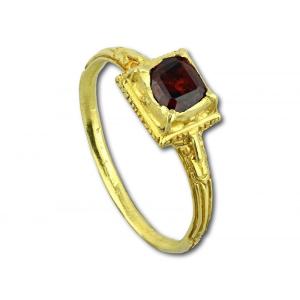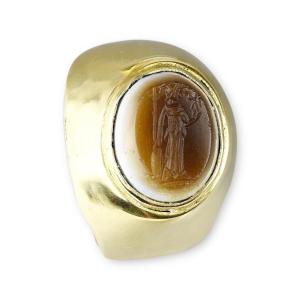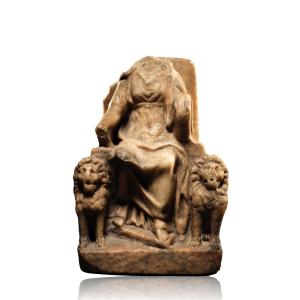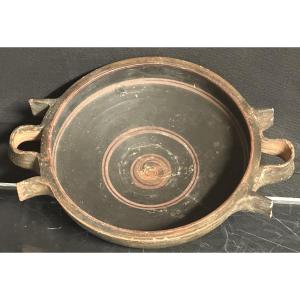Achaemenid Empire, 5th–4th Century BC.
Each circular appliqué measures approximately 1.5 cm in diameter and weighs 0.3 grams, with a total combined weight of 1.92 grams.
Delicately worked in high-purity gold, each disc features a finely rendered lion-griffin (or winged lion), seated right but with the head turned dramatically to the left—an enduring motif of power and vigilance within Achaemenid art. The surface retains crisp detail, with each appliqué pierced with three small holes, likely for attachment to garments or ceremonial textiles.
Provenance: Private English Collection, assembled between the late 1970s and early 1990s.
For closely related examples, see the Oxus Treasure in the British Museum, London, registration nos. 1897,1231.28–30.
https://www.britishmuseum.org/collection/object/W_1897-1231-29?selectedImageId=1613837251
https://www.britishmuseum.org/collection/object/W_1897-1231-30
https://www.britishmuseum.org/collection/object/W_1897-1231-28?selectedImageId=24365001
Gold held immense significance in the Achaemenid Empire, not only as a symbol of wealth and divine favour but also as a practical medium for art, currency, and royal regalia. It was used in architectural decoration, lavish court objects, jewellery, and ceremonial ware, often reflecting the empire’s vast wealth and cosmopolitan reach. Among the prominent motifs in Achaemenid art is the lion-griffin—a mythical creature combining the body of a lion with the wings of an eagle. This powerful image, frequently seen in gold appliqués, seals, and metalwork, conveyed themes of imperial power, protection, and control over both terrestrial and celestial realms. The lion-griffin stood as an emblem of dominance and guardianship, befitting the grandeur of Persia’s imperial ideology.


















































 Le Magazine de PROANTIC
Le Magazine de PROANTIC TRÉSORS Magazine
TRÉSORS Magazine Rivista Artiquariato
Rivista Artiquariato